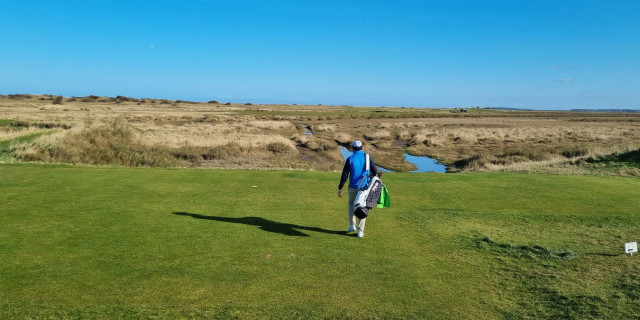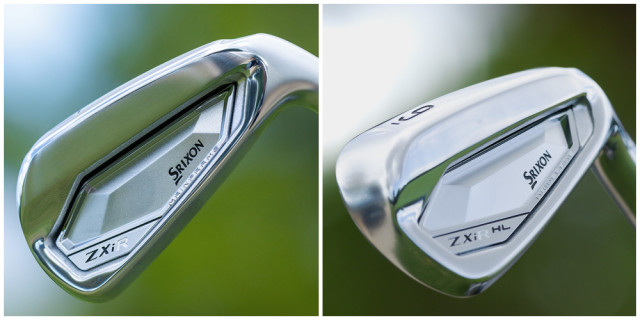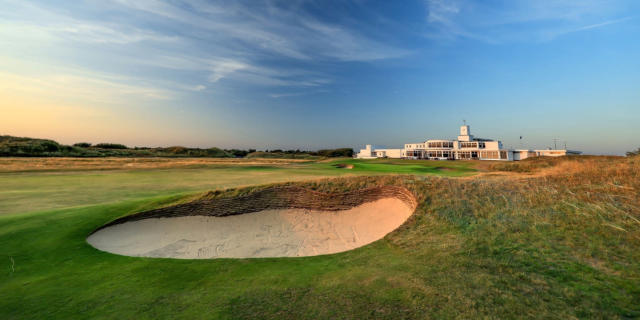
Hole by Hole Guide to Royal St George's
This week, Royal St George's hosts The Open for a 15th time. Having been the first English venue to stage the championship, the historic club in Sandwich has presented many an unforgettable moment through the years.
But it's also a formidable layout, a challenging design, one that will test the world's best players. We take a closer look at each of the holes that the field will face.
1st, Par 4, 445 yards
Widely regarded as one of the toughest starts in Championship golf, with thick rough either side of the fairway and a green which slopes away from players. The tee shot should favour the flatter left side of the fairway, but it needs to carry 250 yards over a deep swale, known as ‘the Kitchen’. The wide green is guarded by three bunkers which collect any approach shots that come up short or left, particularly those from the rough. Tiger Woods famously started with a triple bogey here in the 2003 Championship while Jerry Kelly carded an 11 in 1993.
2nd, Par 4, 421 yards
A right-to-left dog-leg which turns towards the coast. It’s 250 yards to carry the two bunkers on the corner of the dog-leg, but most pros will take a 3-wood for position and favour the right side to leave a better angle in with a short iron. Any approach drifting right or left will run into a little hollow, leaving a difficult pitch to a small, raised green which falls away at the edges, a recurring feature at Royal St George’s.
3rd, Par 3, 239 yards
A rare par three, featuring not a single bunker. Mounds surround the green and often deflect balls from the right back onto a two-tier putting surface which is just 15 yards wide. Statistically it is one of the most difficult short holes in Open history. The hardest pin is on the bottom level.
4th, Par 4, 491 yards
The priority off the tee is to avoid the Himalaya bunker, which is more than 40 feet. Those who attack it need to carry 270 yards to find a flat area of fairway, which lies beyond a large dune known as the ‘Elysian Fields’. The approach plays to a green with a deep depression front-left and white posts three paces over the back. The margin for error is small and anything coming up short or too far right will be deposited into a hollow with a six-foot climb back up. In 2011, this hole yielded more double bogeys (26) than birdies (16).
5th, Par 4, 422 yards
Perhaps best remembered for John Daly driving the green during practice in 1993. A first sight of the sea is present from the tee, where players must choose which section of the split fairway to aim for. The bold will look to cut the corner of the dog-leg and take on a carry in excess of 320 yards to clear five bunkers and many more dune ridges. A sub 260-yard lay-up is the safer option and stops players from running through the fairway.
6th, Par 3, 174 yards
Four deep pot bunkers and a huge dune protect the green, which is set on a 45-degree angle to the tee and divided into two tiers by a ridge that runs through the middle. In 2011, Tom Watson’s hole-in-one overshadowed the fact that there were more double bogeys or worse here than any other par three on Royal St George’s.
7th, Par 5, 566 yards
Statistically, this is the easiest hole on the course. The drive plays blind to a fairway which is overlooked by high dunes on the left and sits hidden behind the crest of a hill some 280 yards in the distance. The hole turns slightly left for the second shot and normally benefits from a prevailing wind – which might explain why 19 of the 23 eagles in 2011 were made here. Both Darren Clarke and Phil Mickelson made a three in the final round after flirting with the steep-sided bunker on the right and using the contours to run the ball onto the green.
8th, Par 4, 450 yards
From the ‘easiest’ hole to one of the most difficult hole at Royal St George’s. The 8th was originally a par three but turned into a dog-leg right par four as part of the course changes that preceded the return of The Open in 1981. Club selection from the tee is key to keep out of the bunkers on the right and to avoid running out of fairway at 325 yards, especially as the final 25 yards is all downhill. The approach is just as tricky to judge and plays over 80 yards of rough to a long and slender target nestled between sandhills and bisected by a ridge. It’s not uncommon to see 40 yards of run in the summer, so expect to see balls being chased onto the green.
9th, Par 4, 412 yards
The 9th originally played along the ridge that extends down its right-hand side, but the fairway now snakes between dunes which can guide off-line drives back to the short grass. The drive must stay short of the two traps at 329 yards, and from there it’s a pitch to a slightly plateaued but fiercely undulating green that falls off to the right and is fraught with danger on the left.
10th, Par 4 , 415 yards
Often played into wind, this left-hand dog-leg plays much longer than 415 yards because of its steep rise. The bunker is not really in play off the tee, so it’s all about the approach from a sloping lie to an exposed, elevated green. Thick rough at the back is especially severe and a second shot that is not kept right of centre will likely run into one of two deep traps on the left. The best play is to aim for the front apron, but misjudge it slightly and the ball can trickle down the hill, leaving a tough pitch from a tight lie over sand.
11th, Par 3, 238 yards
Played back out towards the sea, the 11th used to be a par four but now represents the longest par three on the course. The prevailing wind is south-westerly and shortens the yardage, but a significant right-to-left slope on the green makes putts difficult to read and means any shot turning left will be thrown towards three bunkers. Mounding behind the two-tier green can help slow down a shot coming in hot, though it’s not uncommon to see balls finding a gully with a sticky bank at the back. Most caddies will pick a line just a yard left of the two traps on the right.
12th, Par 4, 379 yards
The shortest par four but certainly not the easiest. Expect to see Bryson DeChambeau attempt to drive the green if the R&A move the tees forward, though the narrow green is heavily protected by hollows either side and five bunkers blocking the entrance. Those who lay-up with a long iron will need to avoid a ridge which runs across the right side, kicking balls towards sand on the corner of the dog-leg. Second shots played right of the flag will usually run towards the hole, but a birdie is never a given on a green which slopes from front to back and has a big drop-off on the left. Tiger Woods four-putted here in 2003.
13th, Par 4, 456 yards
Likely to be played from the tee on the far right, finding a narrow fairway is not easy, with four bunkers (including one created by a jettisoned WWII bomb) within range. The approach shot is just as tricky and plays to a green with a ridge running down its spine and out of bounds just over the back. A pin on the left shelf is almost impossible to get close to because of how high it sits, while the right side has a narrow valley with a nasty bunker 10 yards short which needs to be carried.
14th, Par 5, 547 yards
A brutal hole which has been responsible for three of the eight highest par-five scoring averages in The Open since 1982. In 2003 and 2011, the average score was 5.3 and 5.07 respectively. Most players bail out to the left off the tee where the hay is pretty thick, though the bigger hitters will need to lay back from ‘Suez Canal’ – St George’s version of the Swilcan Burn – which splits the fairway in two around 330 yards from the tee. Henrik Stenson ran up an 11 here in 2011 after blasting two balls onto the neighbouring Prince’s Golf Club.
15th, Par 4, 496 yards
The longest par four and the toughest as well. Even a drive of 300 yards beyond five bunkers leaves a challenging carry over three cross bunkers to a small, saucer-shaped target framed by mounds on the left and a run-off area on the right. Shots that miss on the left face a really challenging pitch over a bank.
16th, Par 3, 161 yards
The last short hole at Royal St George’s and wind plays a big part. Thomas Bjorn’s hopes of lifting the Claret Jug evaporated here in 2003 after catching the false right shelf and taking three to get out of the sand on the right. The back-to-front green is ring fenced by seven bunkers in all but is actually more generous and easier to read than most. It was here that Tony Jacklin celebrated the first televised hole-in-one at the 1967 Dunlop Masters tournament.
17th, Par 4, 426 yards
The penultimate hole is a gentle dog-leg from right to left that features a fairway full of swales and humps. Distance control is crucial with the second shot. Under-hit approaches will be punished by a false front, while anyone who goes over the back will have an even tougher shot coming back unless the pin is on the front of the green. Two pairs of bunkers lurk either side as well, meaning there’s little margin for error on what is a very narrow target.
18th, Par 4, 450 yards
One of the most fearsome finishing holes on The Open rota, the 18th at Royal St George’s played to an average of 4.62 in 1985. Drives down the left side of the fairway bring three bunkers into play but offer the best angle to a small, narrow target with out of bounds five yards over the back. The green is framed by two bunkers and a shallow ridge which funnels balls left of centre into a dip known as ‘Duncan’s Hollow’. From there, Sandy Lyle needed two attempts to find the putting surface on his way to victory in 1985.

The oldest & most prestigious major, a trip to The Open is a must for every golf fan. From tickets and transfers to hospitality & golf, Golfbreaks.com can build the perfect package to help you experience The Open in style.
Tags: The Open Royal St Georges Kent









